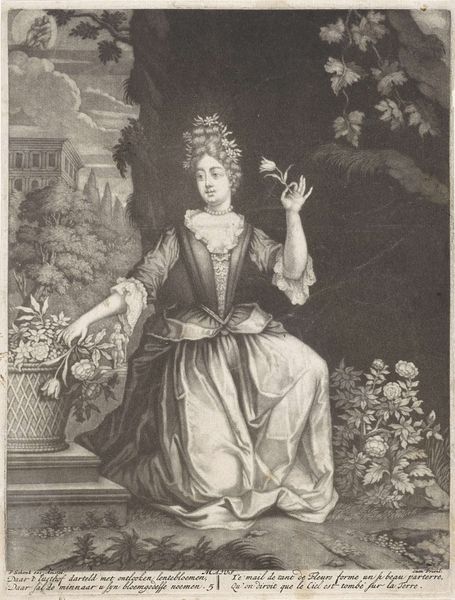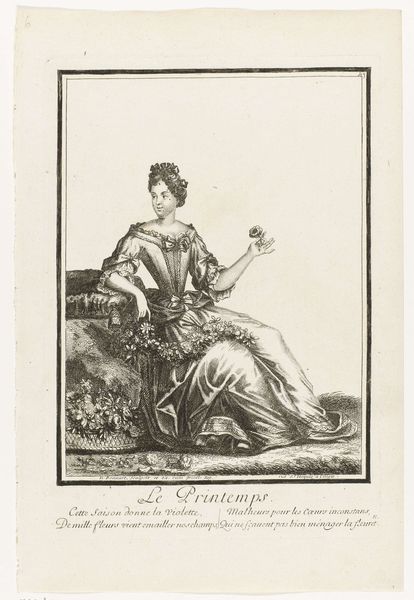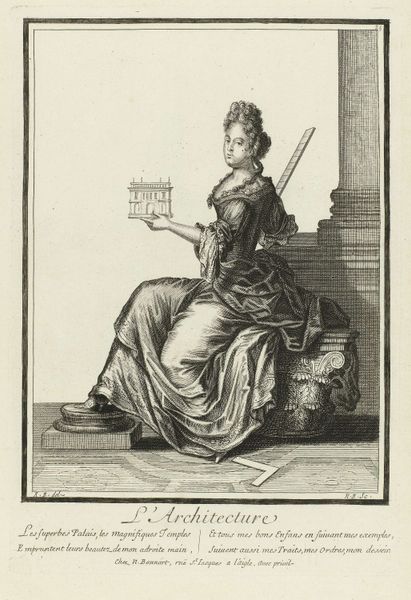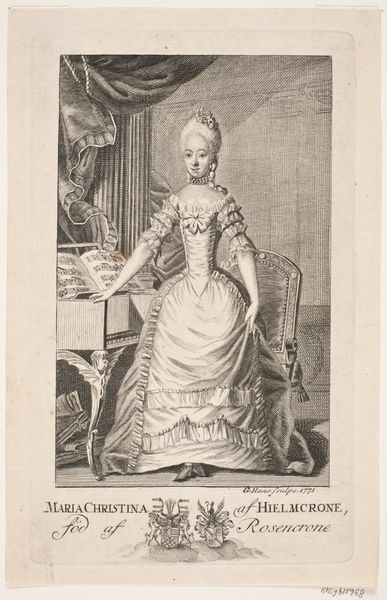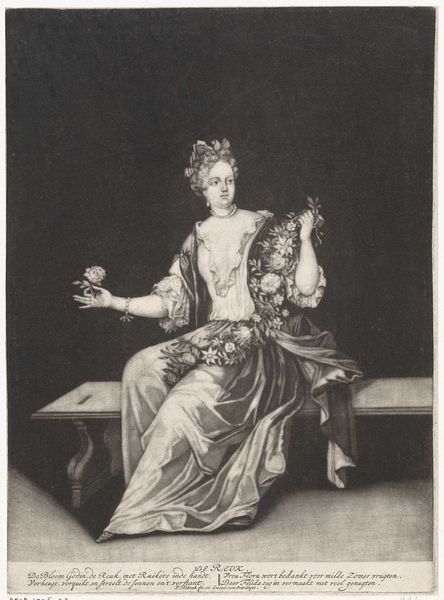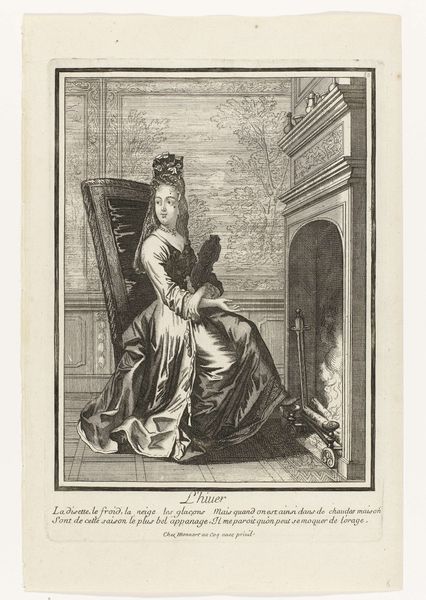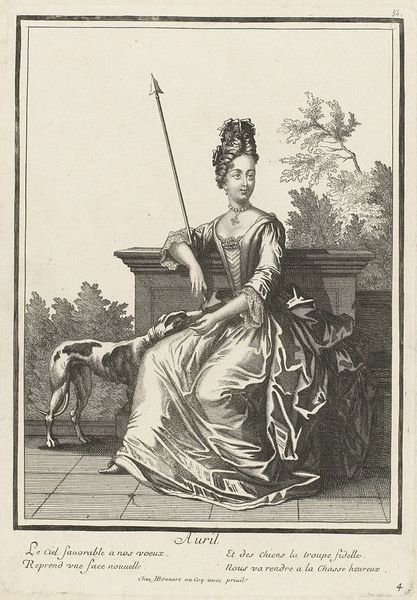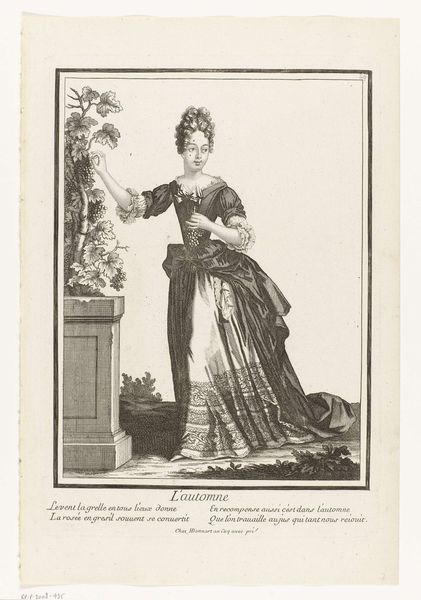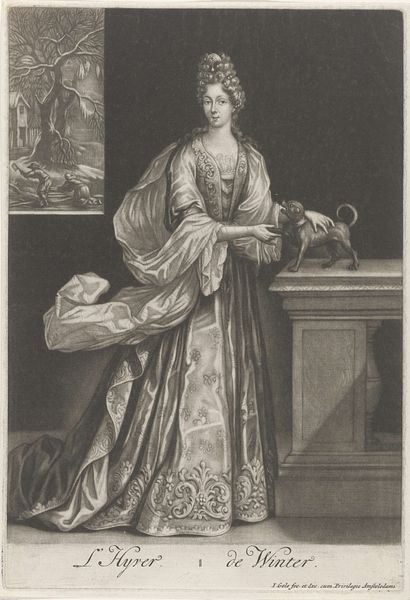
print, engraving
#
portrait
#
baroque
# print
#
figuration
#
genre-painting
#
engraving
Dimensions: height 271 mm, width 190 mm
Copyright: Rijks Museum: Open Domain
Curator: This print, entitled "Mei" or May, was created between 1652 and 1711 by Henri Bonnart. It's currently held in the collection of the Rijksmuseum. Editor: My first impression is that this is delightfully frivolous. It's light and airy despite being a monochromatic engraving. The textures are fantastic! Curator: Indeed. Note how Bonnart used the engraving process to create these varied textures and patterns. We see cross-hatching to render the rich, shimmering fabric of her gown, juxtaposed with the delicate, almost pointillist effect of the flowers around her. Semiotically, this contrast between high artifice and the natural world underscores the theme of spring and its ephemeral beauty. Editor: Speaking of materiality, I'm curious about the labor involved. Each line was meticulously etched, acid-bitten, then printed, demonstrating highly skilled labor to create something that would’ve likely circulated among the wealthier classes. Consider the paper quality, too. It speaks to a certain level of consumption and display within a specific social sphere. Curator: Absolutely. The composition directs our eye to the figure at the center. We note the placement of her hand holding the flower. Observe the carefully constructed triangular form made by her dress, balancing both stasis and movement. The linear framework grounds the eye through visual stability. Editor: I find it fascinating how this print bridges genre painting and portraiture. On one hand, it's a depiction of fashionable life, emphasizing garments and accessories. On the other hand, it engages a particular type of idealization, representing ‘May’ as an allegory using materials like the metal etching plates to beget an idyllic scene which carries certain social meaning in its context. Curator: It's also an excellent example of Baroque aesthetics. The theatricality, the decorative details, and the implied movement are all hallmarks of the period. This engraving acts not only as art but as a codified emblem. Editor: So we’ve moved from the etched line on metal and its material manifestation to decode themes of seasonal and social hierarchies—certainly far from a simple floral portrait. Curator: Agreed. Bonnart’s “Mei” provides fertile ground for analyzing Baroque aesthetics and production.
Comments
No comments
Be the first to comment and join the conversation on the ultimate creative platform.
